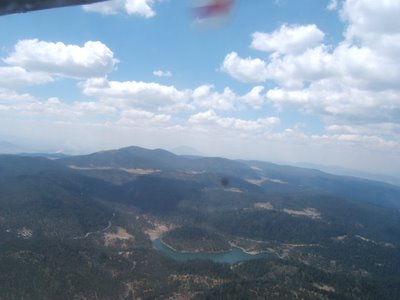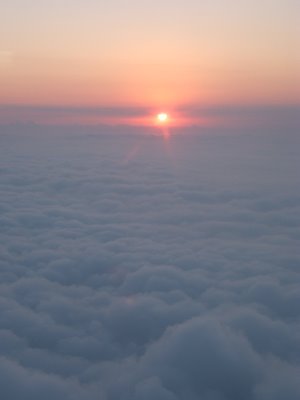As of tomorrow, I will have been here in Mexico for 2 weeks, and it has gone by really quickly. My days consist of either "no fly days", where we are given access to the plane for 8 hours and allowed to work on the instruments, "fly days", where we are given 3 hours to do preflight preparation (and work on the instrument, where necessary, given that we can't tear things apart too much) and then anywhere from 6 to 9 hours of flights, and "hard down days", where we aren't given access to the plane, and we ARE given access to tour around, relax by the pool, go shopping, etc. Evenings usually see us in either the local taco bars, the 100% Natural restaurant (just think "Boulder food"), an Italian joint with amazing seafood dishes, an Argentian steakhouse - most expensive by FAR, or a few other haunts that have been scoped out time and again for good food. The locals usually eat around 8 or 9 PM, and we have also settled into eating at a similar time, partially due to the workload, and partially because it just seems to fit.
I'm just coming off two consecutive fly days, and I got a few pictures that are worth sharing:
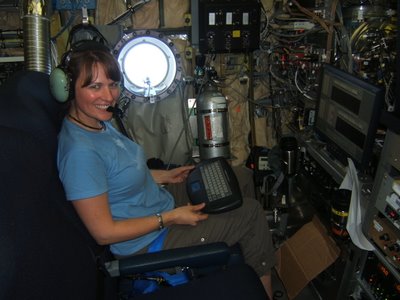
So here I am in my seat... ambient temperature ranges from about 30 to 35 degrees C, and the air coming out at my feet ranges from about 35 to 43 degrees C. That's the reason for the piece of very technical cardboard that is taped to the rack at my knees. Our keyboards are handheld, which doesn't make the aircraft guys very happy - they prefer to have everything strapped in. Hence, we have to stow them for takeoff and landing. It is VERY loud on the plane, and although I can get by with no ear protection, we are almost always wearing these noise-cancelling headsets. They're more for communication than anything - we have a number of channels to talk to either everyone, or a few people, or just the people hooked into our station, but most of the time my co-workers and I just wear our headsets a little off one ear and we shout to each other so that we can stay connected to the rest of the scientists on board, and more importantly to the mission scientist who lets us know when we're going to change headings and/or altitudes.

Yesterday we flew over the Yucatan, and one of the main things that they've got going for them down there are constant fires. Here you can see both the fire burning down below, as well as the smoke and haze that are created as a result.
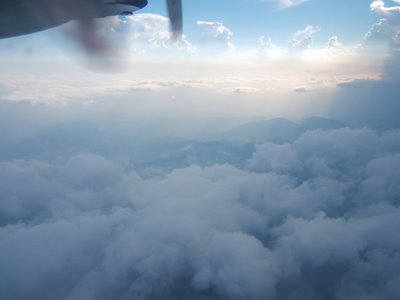

We has some pretty spectacular clouds to view yesterday, too. These were from near the end of our flight, just before we had to turn around to avoid a pretty nasty thunderstorm. Fortunately, the thunderstorm was not in Veracruz where we were headed. Our landing, though bumpy, wasn't that bad. It's hard to see, but in the first picture here there are rows of mountains below us.
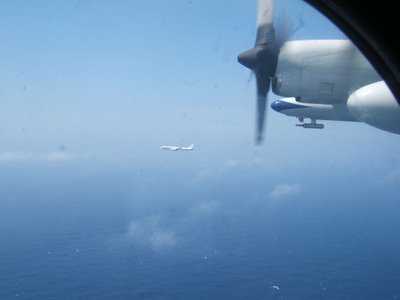
This was actually from Sunday, when we did our last intercomparison with the NASA DC-8. The two planes fly "wingtip to wingtip" (from this far apart) and we are essentially sampling the same air so that we can compare our two instruments. The DC-8 is a much larger and longer range plane than our C-130, but it has a similiar suite of instruments, so it is worthwhile comparing their results. They were based out of Houston, but they've already started their downtime in preparation for Intex-B, which is the project we're involved in that starts in mid-April.

This is from the last "fly day" that I didn't fly. Instead I "toured around" and got to go check out the local beach. No, I didn't go in. There are very questionable practices of local businesses dumping their sewage into the gulf here in Veracruz, and it's not recommended that we foreigners go swimming in the ocean. There are many people who do, and we admire their... uh... constitution.
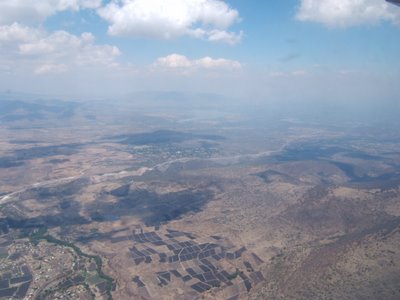 Here you can see the haze that obscures the mountains in the background, as well as the contrast between it and the blue sky above. Just below the clouds is the massive layer of pollution that we were approaching.
Here you can see the haze that obscures the mountains in the background, as well as the contrast between it and the blue sky above. Just below the clouds is the massive layer of pollution that we were approaching. Now we're over Mexico city, and we could barely see the ground due to the pollution. Just below us the ground was somewhat visible, and a little further away was almost completely obscured.
Now we're over Mexico city, and we could barely see the ground due to the pollution. Just below us the ground was somewhat visible, and a little further away was almost completely obscured.
